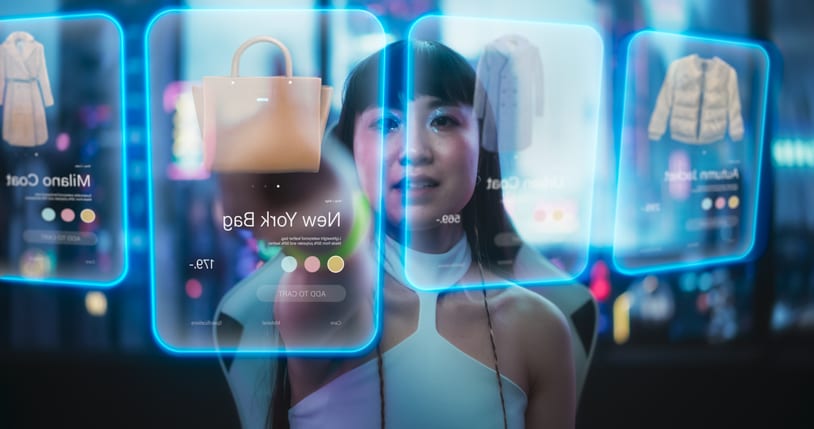AI is stepping up in a big way. We’re no longer just feeding data to humans to make sense of it—now AI is stepping in to make the decisions for us. This shift to actionable AI promises significant changes for businesses, but it also raises important challenges that companies must be ready to address.
The Rise of Actionable AI in Sales
Deloitte’s latest report says 67% of companies are increasing their AI budgets because they’re seeing such strong results. Just look at the retail industry where generative AI is already doing incredible things. It can identify customer trends and even flag shipping delays so your team can fix issues faster. These AI advancements have already transformed ecommerce operations. Now, Salesforce is pushing the boundaries with actionable AI.
Salesforce’s xGen-Sales model works hand-in-hand with Agentforce, its AI-powered assistant, to simplify the sales process. This model takes care of tasks like managing pipelines and updating contact lists automatically. On the surface, this reduces the time sales teams spend on administrative tasks, freeing them up to focus on what matters: closing deals. What businesses should be aware of ist that this shift requires new skills, changes in workflow, and, often, a reliance on external expertise for proper integration.

Building on that momentum, Salesforce’s xLAMs, or Large Action Models, are taking actionable AI to the next level. These models don’t just analyze data—they get things done. It can launch entire marketing campaigns or optimize inventory globally with hardly any human input.
This move from insights to execution sounds like a game changer, but it’s important to recognize that this level of automation can also introduce significant gaps. As a company you must be ready to manage the complexity of these systems and anticipate the challenges of scaling, system integration, and even the need for constant updates and monitoring.
Generative AI to Actionable AI: What’s the Difference?
Generative AI helps you brainstorm ideas, create content, and present insights so you can make better decisions for your business. For example, it can suggest a variety of email subject lines based on customer behavior, leaving the final choice to you.
But actionable AI takes this a step further by actually executing tasks. For example, take Salesforce’s Agentforce. It combines generative AI with actionable AI to not only create but also deploy campaigns. It analyzes customer data, picks the right message, and even sends targeted emails or recommends products automatically without human intervention.
How xLAM is Tackling Tough Business Challenges
Let’s take a closer look at how Salesforce’s xLAM tool works. One of its key features is the automation of tasks that once required manual intervention, particularly in inventory management. According to McKinsey & Company, businesses leveraging AI in their supply chains have seen a 35% improvement in inventory levels. We can expect AI to continue permeating even deeper into inventory functions.
In this case, consider a retail chain selling outdoor gear. xLAM can analyze weather forecasts and past customer sales data to predict the demand for winter boots in colder areas. The tool doesn’t stop at analysis. It triggers automatic restocks and places replenishment orders when inventory runs low.
For this to run smoothly, your tech team must be mindful about system reliability, potential data inaccuracies, and the ability of the company to keep up with the complexity of these automated processes. With the right support—whether it’s a strong in-house team or some expert help—businesses can tackle the challenges and really make the most of this AI-driven automation.

Simpler Processes, Bigger Profits
Salesforce’s xGen-Sales and xLAM models promise to simplify your workflow and boost profits, but you should approach these tools with an understanding of the trade-offs involved.
Automated Campaigns
These models handle the heavy lifting when it comes to campaigns. Imagine there’s a big outdoor festival coming to town. xLAM can spot the event, predict what products your company sells (like portable chairs or coolers) might be in demand, and send personalized emails to local customers promoting those items. This approach fine-tunes your marketing and can increase sales with less effort. Having said that, automating campaigns requires ongoing monitoring and adjustments to make sure the messaging hits the mark as you intend.
Personalization
What’s great about these models is how they create unique experiences for your customers. If someone’s checking out backpacks on your site, they might get a text later about that exact item. Forget generic marketing. This approach is personal, specific, and shows your customers that you’re in synch their needs. Pay attention to data to ensure you’re handling it correctly to make these interactions seamless.
Faster Conversions
Let’s say a customer is eyeing a product but hasn’t purchased it yet. The xGen-Sales AI tool could send them a limited-time discount automatically. It helps move things along, cuts down on delays, and makes sure you don’t miss out on the sale. Be cautious about how often these types of offers are sent—too many can lead to discount fatigue or an expectation of constant promotions.
Upselling Opportunities
The broader actionable AI tool xLAM can analyze what customers have bought before and recommend add-ons or upgrades. If someone’s buying a camera, it’ll suggest tripods or lenses. It’s seamless, keeps your customers happy, and increases your revenue. On the other hand, it also requires fine-tuning to ensure the right suggestions are made. The risk of pushing irrelevant products or overloading customers with recommendations is real.

Lower Operational Costs
We know how tasks like data entry or sending follow-up emails can take up quite a bit of time. With AI tools, you don’t need to rely on extra talent for that anymore. The resources saved can be invested elsewhere—like in marketing or product development. However, you should be mindful of the initial costs of implementing AI and the ongoing need for regular updates and maintenance to ensure the systems run smoothly.
Improved Efficiency
xGen-Sales can take over repetitive tasks such as lead generation or data analysis, freeing your team from manual work. For example, if someone clicks on a promo email or checks out a top product, the AI can assess how likely they are to convert and set up personalized follow-ups, like sending tailored emails or prompting the sales team to reach out. Nonetheless, ensure your team remains equipped to manage these systems and adjust as necessary, rather than simply relying on automation.
AI in Action: Making Teams More Effective
Salesforce’s AI tools are designed to make life easier for sales and customer experience teams. Here’s how you can leverage their features:
Real-Time Decisions
The xLAM tool can track what’s selling fast and automatically adjust promotions to keep up. Perhaps a particular health supplement is a surprise bestseller. The AI tool tracks this spike in sales and automatically adjusts your promotions. It can increase visibility for the item by working with third-party tools to bump it up to your website’s homepage. It takes out the guesswork for your teams and makes sure customers get what they need, when they need it.
Your job here is to keep an eye on these systems to ensure the adjustments align with broader marketing goals and aren’t driven solely by sales spikes or other behaviors that may not be sustainable.

Scalability
Salesforce’s AI tools are great for handling large tasks without needing a huge team or budget. What’s especially impressive is that xLAM works for businesses of any size. A mid-sized boutique can use it to take care of seasonal stock adjustments and customer engagement. Similarly, a global retailer can use these models to address thousands of SKUs and customers.
Be ready to answer the question ‘Is your infrastructure capable fo handling the data and complexity that comes with scaling AI solutions?’ It’s not just about having the right technology; the operational capacity to manage this growth is essential. If you’re unsure, we can help assess and guide you through related concerns.
Understanding AI Limitations
One of the cool things is that actionable AI knows when it’s out of its depth. If a task needs a human touch—like dealing with a complicated or sensitive customer issue—it automatically flags it for review, so nothing gets mishandled. This helps maintain a balance between automation and human oversight. You must ensure these limitations are set up and fine-tune the AI to avoid missing important nuances in customer interactions.
Cross-Department Collaboration
Salesforce tools like Marketing Cloud make it easier to share customer data between teams. For example, if a customer contacts support about a problem with a recent purchase, xLAM could tap into their history and figure out the next steps. It might even trigger Marketing Cloud to schedule a follow-up call with a customer rep to discuss exchange options or future purchases.
Here, what you should be aware of is data privacy and ensuring that cross-department collaboration doesn’t inadvertently lead to mishandling of sensitive customer information.
Automation Across Teams
Imagine a new customer signs up—Salesforce’s xGen-Sales tool can assign a sales lead, update the system, and send a personalized welcome email. This email will have their name and could reference their interests if they signed up while browsing a specific product category. This model can handle the background work so teams can focus on bigger priorities. When dealing with customers there’s a fine line to be mindful of. Ensure that the personalization is accurate and relevant to avoid coming off as overly automated or generic, especially when AI is handling the customer’s first interaction with the brand.
Things to Keep in Mind with AI-driven Automation
As explored in the sections above, Actionable AI can transform your business, but there are a few things to watch for. AI is great for handling repetitive tasks or straightforward campaigns, but for nuanced problems, it’s better to have a human step in. Then there’s data security. AI tools deal with sensitive customer info, so you’ll want strong protections in place, like encryption, to keep everything safe. Thinking ahead on these fronts will make adopting AI much easier.
When it comes to talent, your team might need extra training to get comfortable with tools like Salesforce’s xLAM. That’s not a bad thing—upskilling your team will get them prepared for new challenges. If you don’t have the talent in-house, connect with specialized Salesforce development services like ours. We’re ready to help.
Conclusion
Salesforce’s AI tools, like xGen-Sales and xLAM, are making a real difference in how businesses get things done. They handle the busy work, create unique customer experiences, and let your team focus on what really matters—building trust and making sales. These tools simplify workflows, cut costs, and boost efficiency. Ready to make it work for you? Team up with our Salesforce experts, and we’ll help you leverage these innovative tools to get better conversions and keep your customers coming back.






